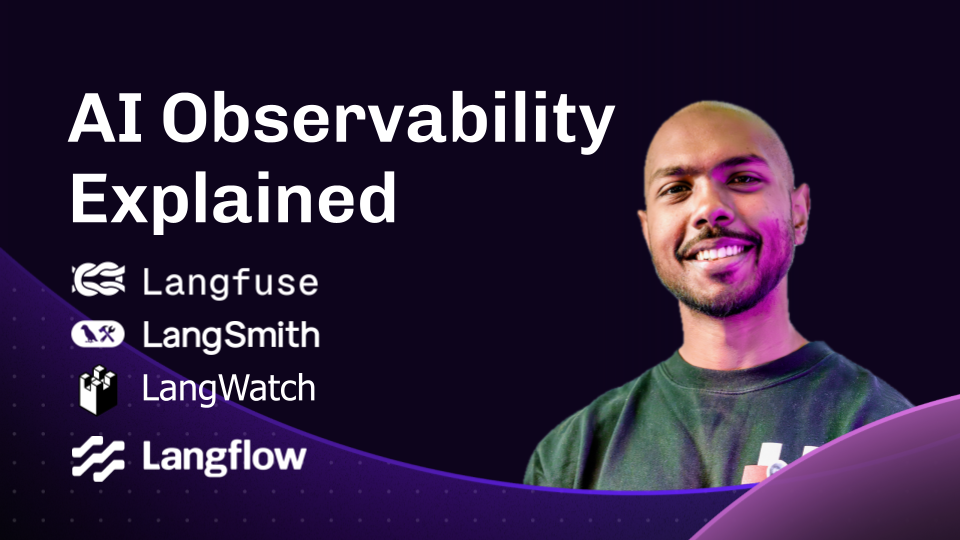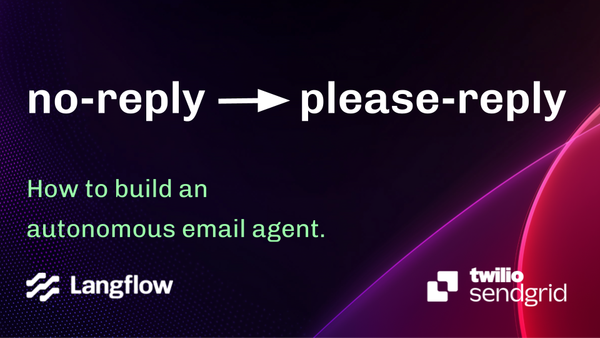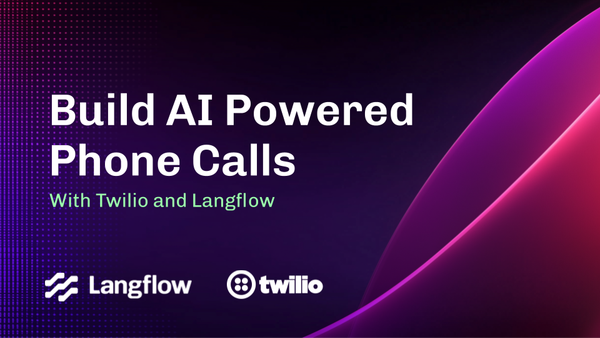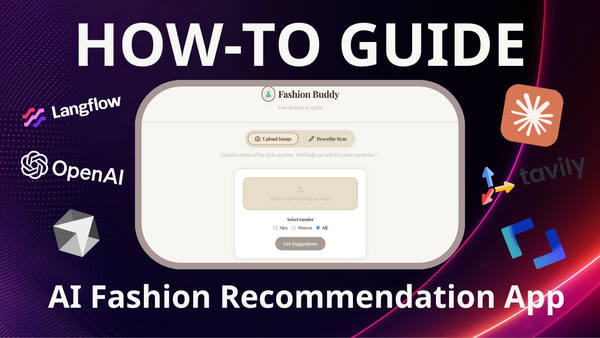LLM Observability Explained (feat. Langfuse, LangSmith, and LangWatch)

Building a new application powered by Large Language Models (LLMs) is an exciting venture. With frameworks and APIs at our fingertips, creating a proof-of-concept can take mere hours. But transitioning from a clever prototype to production-ready software unveils a new set of challenges, central among them being a principle that underpins all robust software engineering: observability.
Watch how to add AI LLM Observability via Langflow on YouTube
If you've just shipped a new AI feature, how do you know what's really happening inside it? How many tokens is it consuming per query? What's your projected bill from your language model provider? Which requests are failing, and why? What data can you capture to fine-tune a model later for better performance and lower cost? These aren't just operational questions; they are fundamental to building reliable, scalable, and cost-effective AI applications.
Observability is the key to answering these questions. It is especially critical in the world of LLMs, where the non-deterministic nature of model outputs can introduce a layer of unpredictability that traditional software doesn't have. Without observability, you're usually flying blind.
Fortunately, instrumenting your application for observability is no longer the difficult task it once was. The modern AI stack has matured, and integrating powerful observability tools can be surprisingly straightforward. Let's explore how to do this with Langflow to see these concepts in action.
The Foundation: Instrumenting Your Application
At its core, observability in an AI context involves capturing data at each step of your application's logic. When a user sends a request, a lot happens: a prompt is constructed, one or more calls are made to an LLM, the output is parsed, and perhaps other tools like calculators or web search APIs are invoked. A good observability platform captures this entire sequence as a "trace."
A trace is a structured log of the entire journey of a request, from start to finish. It shows you the parent-child relationships between different operations, the inputs and outputs of each step, and crucial metadata like latency and token counts.
While you could build a system to capture this data yourself, a dedicated observability platform provides a full suite of tools out of the box: a user interface for exploring traces, dashboards for monitoring key metrics over time, and systems for evaluating the quality of your AI's responses.
Let's look at how easily you can integrate some of the most popular platforms into a Langflow application. The process is often as simple as setting a few environment variables.
A Tour of the AI Observability Landscape
The ecosystem of AI observability tools is rich and growing. While they share common goals, they offer different philosophies and features. We'll look at three popular choices: LangWatch, LangSmith, and Langfuse.
LangWatch: Simplicity and Speed
LangWatch is an open-source platform that prides itself on a frictionless developer experience. To integrate it with an application built in Langflow, you only need to provide a single environment variable to Langflow: LANGWATCH_API_KEY.
Once configured, every request to your Langflow application automatically sends a detailed trace to your LangWatch dashboard. You'll see a live-reloading feed of messages, and clicking on any one of them reveals a detailed trace. This trace breaks down the entire workflow, from the initial chat input to the final output, showing you exactly how much time and how many tokens were spent at each stage—from prompt construction to the final LLM call. This immediate, granular feedback is invaluable for spotting bottlenecks and understanding costs.
LangSmith: Production-Grade and Battle-Tested
From the creators of the popular LangChain library comes LangSmith, a platform designed for building production-grade LLM applications. While not open-source, it is battle-tested and offers a polished, comprehensive feature set.
Integration is similar: you set a few environment variables for the API endpoint, your API key, and a project name. Immediately, LangSmith begins capturing traces. Its UI provides a clear view of your application's run history, with detailed information on latency, token usage, and cost per run. LangSmith excels at providing pre-built dashboards that track key performance indicators like success rates, error rates, and latency distribution over time, giving you a high-level overview of your application's health.
Langfuse: The Open-Source Powerhouse
Langfuse has emerged as a favorite in the open-source community, and for good reason. It is incredibly powerful, offering deep, detailed tracing and extensive features for monitoring, debugging, and analytics. It requires a few more environment variables for its public key, secret key, and host, but the setup is still minimal.
Where all of these tools truly shine is in their ability to visualize complex interactions, especially with AI agents that use multiple tools. If your application involves a sequence where the LLM decides to call a search engine, then a calculator, and then another prompt, Langfuse maps out this entire chain of thought beautifully. You can drill down into each tool call, inspect the inputs and outputs, and see precisely how the agent arrived at its final answer. This level of detail is indispensable for debugging the complex, multi-step reasoning of modern AI agents. Their dashboards also offer a granular look at costs, breaking them down by operation, which can help you pinpoint exactly which part of your application is the most expensive.
From Data to Insight
Integrating these tools is just the first step. The real value comes from what you do with the data they provide. By regularly monitoring your application's traces and metrics, you can begin to ask and answer critical questions:
- Is my application getting slower? A rising p99 latency could indicate an issue with a downstream API or an inefficiently structured prompt.
- Are my costs predictable? Watching your token consumption can help you prevent bill shock and inform decisions like switching to a smaller, more efficient model.
- Where are the errors happening? Traces make it easy to pinpoint if failures are happening at the LLM level, in a data parsing step, or during a tool call.
- Can I optimize my prompts? By analyzing the most expensive and slowest traces, you might discover opportunities to re-engineer your prompts for better performance and lower cost.
Observability is not a passive activity. It is an active, ongoing process of exploration and optimization that is fundamental to the software development lifecycle.
Start Building Observable AI Applications Today
The journey to production AI is paved with good engineering practices, and observability is paramount among them. It empowers you to move with confidence, knowing you have the insight to diagnose problems, manage costs, and deliver a reliable experience to your users.
We've seen how visual development platforms like Langflow can dramatically lower the barrier to entry, not just for building powerful AI applications but for instrumenting them with production-grade observability from day one. By abstracting away the boilerplate of integration, they allow you to focus on what truly matters: building efficient, reliable, and transparent AI systems.
So, take your project to the next level. Explore these tools, instrument your application, and embrace the power of seeing what's inside the box. Your users—and your operations budget—will thank you.
Frequently Asked Questions
What is AI observability and why do I need it?
AI observability gives you visibility into how your AI applications behave in production. While traditional monitoring tracks basic metrics like server uptime, AI observability goes deeper - showing you exactly how your models think and perform. With platforms like Langflow, implementing observability becomes seamless through simple environment variables, letting you focus on building rather than instrumenting.
How is AI observability different from traditional application monitoring?
Traditional monitoring focuses on server metrics, but AI systems need specialized observability. When using Langflow, you get visibility into unique AI-specific aspects like prompt construction, token usage, and the chain of reasoning your models follow. This deeper insight is crucial for building reliable AI applications.
What key metrics should I track in my AI application?
Rather than tracking everything possible, focus on metrics that matter for your use case. With Langflow's integrations, you automatically get essential metrics like response times, costs, and success rates without any extra configuration. This data helps you optimize your application's performance and cost-effectiveness.
How do I choose between different observability platforms?
The choice depends on your specific needs, but Langflow makes it easy to experiment. Since Langflow supports major platforms like LangWatch, LangSmith, and Langfuse through simple configuration, you can try different options without changing your application code. This flexibility lets you find the right fit for your team.
What's a "trace" in AI observability?
Think of a trace as your application's story - it shows the journey from user input to final output. When using Langflow, traces are automatically captured and include rich details about each step, making it easy to understand and debug your AI workflows. This visibility is especially valuable when working with complex chains or agents.
How can observability help reduce costs?
By providing detailed insights into token usage and API calls, observability helps identify optimization opportunities. Langflow's integrations make this data readily available, helping you make informed decisions about model selection and prompt engineering to keep costs under control.
What privacy considerations matter?
Privacy is crucial when implementing observability. Langflow's integrations with major observability platforms respect data privacy by default, and you maintain control over what data is logged. This makes it easier to comply with regulations while still getting valuable insights.
How can I get started with AI observability?
Getting started is straightforward with Langflow - simply add the appropriate environment variables for your chosen platform (LangWatch, LangSmith, or Langfuse), and you'll immediately begin capturing detailed traces and metrics. This low-friction approach lets you focus on building features while maintaining professional-grade observability from day one.




